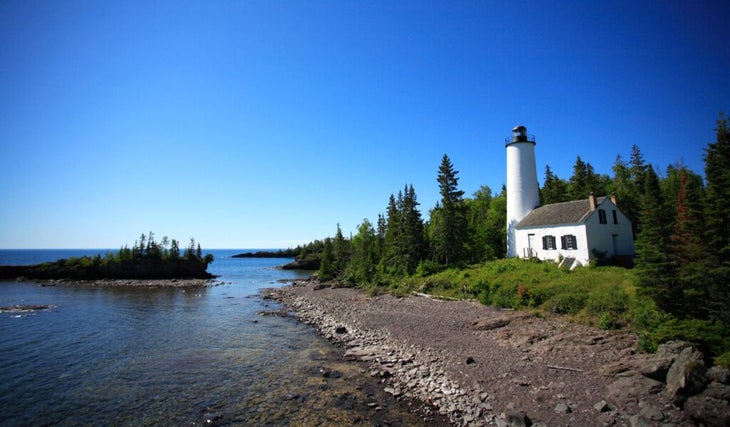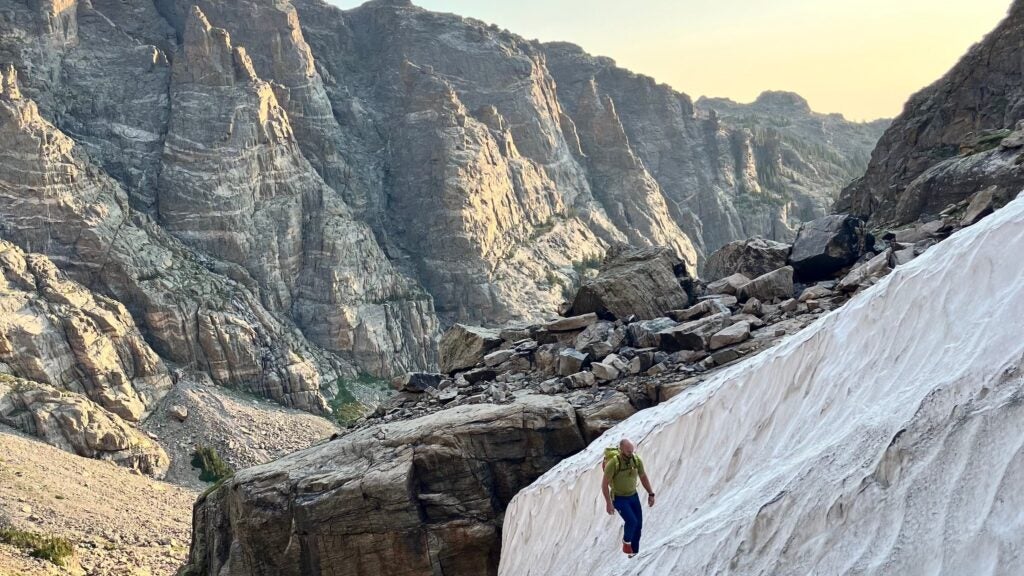No products in the cart.
Outdoor Adventure
Tired of the Heat? These National Parks Still Have Snow in August
Don’t miss a moment of the 2024 Tour de France! Get recaps, insights, and exclusive takes with Velo’s daily newsletter.
Sign up today!.
It’s been a long, hot summer, folks—and we’re just as over it as you are. Fortunately, there are plenty of places that still have decent temps. Even in the Lower 48, many of our national parks sit at high elevations and high latitudes. These positions insulate them from the heat waves down south—and give you the opportunity to taste winter any month of the year. Dip your feet in ice-cold water, jump into a snowbank, or bask in the cool breeze peeling off a glacier at these five summer-perfect parks.
Rocky Mountain National Park, Colorado
With dozens of peaks that soar above 12,000 feet, Rocky Mountain National Park is one of the best places in the country to make a snow angel in midsummer. There are 147 alpine lakes to choose from, but our favorite is the snowmelt-fed tarn at the base of Andrews Glacier, a permanent snowfield that shrinks but never disappears. The 8.3-mile out-and-back from the Glacier Gorge trailhead follows chattering streams and twists through fields of bluebell and columbine on its way to the quiet glacial cirque where Andrews Tarn sits.
Acadia National Park, Maine

Acadia is the northernmost national park on the East Coast, which means conditions already feel pretty Canadian. Add to that a fresh coastal breeze and enough cloud cover to shade the park’s lush forests, and you’ve got a deliciously cool escape from the summer heat. For even chillier temps, plan a hike to the summit of Cadillac Mountain, which is 3 to 5 degrees cooler than the rest of the park. (It’s also the first place in the Lower 48 that sees sunrise; plan for a pre-dawn climb, or snag a summit vehicle reservation.)
Glacier National Park, Montana
Thanks to its location on the border with Canada, Glacier National Park is one of our nation’s highest-latitude hiking havens. This month, highs are hovering around the 60s and 70s, and nighttime temps are still dropping into the 40s. Ascend to higher elevation on any of the park’s hundreds of miles of alpine trail, and you’re almost guaranteed to find cold breezes, refreshing alpine lakes, and pockets of snow. Our pick: The 11.3-mile out-and-back from the Many Glacier entrance to the edge of the Grinnell Glacier. Along the way, you’ll pass three lakes—Grinnell Lake, Upper Grinnell Lake, and Lake Josephine—and ascend to about 6,500 feet above sea level.
Isle Royale National Park, Michigan

Located on an island in the northern corner of Lake Superior, Isle Royale is one of our nation’s least-visited national parks—and one with the most comfortable hiking temperatures during the summer. The breezes flowing across Lake Superior provide an influx of chilled air all summer long, keeping temperatures within the 50s and 70s, even in August. For a full-value coastal wander, target the Stroll Trail, a 4.3-mile jaunt that starts and ends at the Rock Harbor Visitor Center.
Sequoia National Park, California
Home to the tallest peak in the Lower 48, Sequoia National Park encompasses a massive amount of high-elevation terrain and dozens of permanent snowfields. If you’re feeling ambitious, grab a permit to climb 14,505-foot Mt. Whitney, where nighttime temperatures often drop below freezing all year-round. And if you need a hike that’s a little more, well, chill, head to the Mineral King parking lot, which sits at 8,000 feet above sea level. Plan a mellow out-and-back along the snowmelt-fed East Fork Kaweah River, or climb the separate Timber Gap Trail to nearby Columbine Lake, which is often flanked by snow year-round.
Source link

